Category Archive 'Slavery'
28 Oct 2021

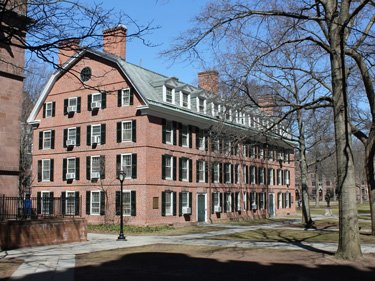
Connecticut Hall on Yale’s Old Campus was completed in 1752.
Yale Officialdom ought to feel ashamed for its hypocrisy on Free Speech, its swooning embrace of Left-wing Intolerance and Mob Rule, its eagerness to climb onboard any form of fashionable irrationality and hysteria.
Yale should apologize for letting a mob of snowflakes hound the Master of Silliman and his wife out of office. Yale should apologize for renaming Calhoun College, for modifying the College Master title, and for naming one of two new colleges for a mentally-disordered radical nobody not a communist had ever heard of.
If we want to go back historically, Yale ought to be ashamed at supporting the Communist subjugation and enslavement of Indochina (which still persists) and the subsequent genocide in Cambodia. Yale should be ashamed for closing down the two ROTC programs, tearing down both their buildings, and selling the French 75mm Field Gun awarded to the Yale Artillery Battalion by the French Government in commemoration of their service in WWI for scrap. Yale ought to look at the history of Kingman Brewster saying that the Panthers couldn’t get a fair trial and being proven correct in an ironical sense when acquittals and a few slap on the wrist convictions were handed down by a New Haven jury to the accused unquestionably guilty of murder and torture.
But, no, Peter Salovey thinks we ought to feel simply awful over there being Negro slaves in Colonial New Haven almost three centuries ago. It also requires investigation, and regret, that Yale circa 1915 actually participated in a general era of National Reconciliation during a time in which the last combatants in the War Between the States were passing from the scene.
In the Gothic and Georgian lunatic asylum bordering New Haven’s Green, so thoroughly has the Left’s absolute obsession with Identity Group Victimhood taken possession of the inmates and staff that professional scholars no longer view certain particular aspects and periods of History with objectivity and detachment. Instead, they might as well adopt period costumes because they are fanatically determined to connect with that History as active partisans and they are equally determined to inflict injury upon and punish their long-deceased (and, at this point, essentially imaginary) opponents.
Yale News:
For the past year, Yale scholars, librarians, New Haven community members, and student researchers have been digging through Yale’s own past for a deeper understanding of the university’s historical relationship with slavery and its legacy.
During a three-day academic conference starting Oct. 28, experts from across Yale and the nation will discuss what they’ve learned so far, including new insights into the construction of Connecticut Hall, an iconic Old Campus structure built in part by enslaved Africans, and the “reconciliationist” approach to Yale’s Civil War memorial in Woolsey Hall. …
Salovey has described the “Yale & Slavery” project — part of an ongoing national discussion about racism and discrimination — as an urgent reckoning with the university’s history, and an important opportunity to analyze, understand, and publicly communicate it.
“Like many of America’s oldest institutions, Yale has seldom, if ever, recognized the labor, the experiences, and the contributions of enslaved people and their descendants to our university’s history or our present,” Salovey said. “For generations, we have looked away from what is in plain sight. But now we are acknowledging that slavery, the slave trade, and abolition are part of Yale’s history.
“It is important we shine a light into every concealed corner of our past, because moving forward requires an honest reckoning with our history, and because the purpose of our university is to create, preserve, and disseminate knowledge. The fundamental work we all share applies as much to Yale’s past as anyone’s.”
The conference is hosted by the Gilder Lehrman Center for the Study of Slavery, Resistance, and Abolition, part of the MacMillan Center at Yale. Founded in 1998, the Gilder Lehrman Center is the first such center in the world to study such international historical questions.
Topics during the conference will include the university’s 18th-century theological roots; the economics of slavery-created wealth; the place of Southern slaveholders at Yale during its first two centuries; medical and scientific legacies of race at Yale; forces of abolition at the university; the history of labor in building the campus; and why the inclusion of Confederate veterans was central to the purpose of the university’s Civil War memorial when it was created in 1915.
RTWT
04 Jul 2021
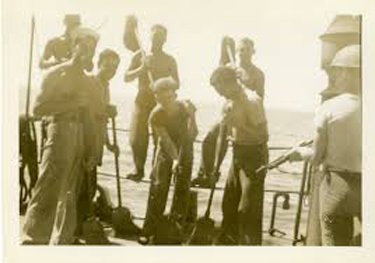
When that leftie friend starts yammering about Slavery, show him what Ishmael said:
“What of it, if some old hunks of a sea-captain orders me to get a broom and sweep down the decks? What does that indignity amount to, weighed, I mean, in the scales of the New Testament? Do you think the archangel Gabriel thinks anything the less of me, because I promptly and respectfully obey that old hunks in that particular instance? Who ain’t a slave? Tell me that. Well, then, however the old sea-captains may order me about—however they may thump and punch me about, I have the satisfaction of knowing that it is all right; that everybody else is one way or other served in much the same way— either in a physical or metaphysical point of view, that is; and so the universal thump is passed round, and all hands should rub each other’s shoulder-blades, and be content.”
— Moby Dick, Chapter 1, page 16.
22 Nov 2019

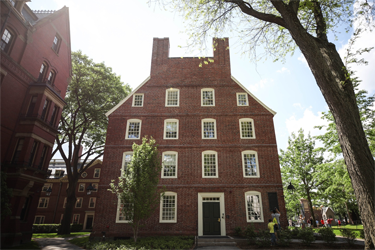
The Crimson reports on the latest vital and totally relevant administrative initiative up there at the little commuter school of the Charles.
University President Lawrence S. Bacow announced the creation of a University-wide initiative to address and further research the school’s ties to slavery in an email sent to Harvard affiliates Thursday.
Bacow selected Radcliffe Institute for Advanced Study Dean Tomiko Brown-Nagin to be the head of a new University-wide faculty committee that will lead the initiative. The University has designated $5 million for the program, according to Bacow’s email.
“It is my hope that the work of this new initiative will help the university gain important insights about our past and the enduring legacy of slavery — while also providing an ongoing platform for our conversations about our present and our future as a university community committed to having our minds opened and improved by learning,†Bacow wrote.
Bacow wrote that the Radcliffe Institute will work closely with library and museum staff to host both programs and academic opportunities related to the issue.
“By engaging a wide array of interests and expertise, as Radcliffe is uniquely suited to do, this initiative will reflect the remarkable power of bringing together individuals from across Harvard in pursuit of a common purpose,†he wrote.
Other faculty on the 12-person committee include former Law School Dean Martha L. Minow and former Dean of the College Evelynn M. Hammonds.
Bacow’s announcement comes as the University continues to grapple with its ties to slavery. In March, Connecticut resident Tamara K. Lanier filed a lawsuit against Harvard alleging the University unlawfully owns and profits off photos of enslaved people who she says are her ancestors.
Earlier this month, the prime minister of Antigua and Barbuda penned a letter to Bacow demanding reparations from Harvard for its historical ties to slavery.
In his letter, Bacow also wrote about efforts that former University President Drew G. Faust spearheaded several years ago like installing memorials commemorating enslaved individuals at Wadsworth House and Harvard Law School, and creating a faculty committee to study the University’s ties to slavery.
In February 2016, former Dean of the Faculty of Arts and Sciences Michael D. Smith announced that faculty leaders of the 12 undergraduate houses would be renamed “Faculty Deans†— a shift away from the former term “House Master,†which some students associated with slavery.
A month later, the Harvard Corporation — the University’s highest governing body — agreed to remove the Law School’s controversial seal, which featured the crest of a slaveholding family. The decision came after pieces of black tape were found over the portraits of black Law School professors in November 2015 and months of student protests.
The initiative announced Thursday will focus on researching further the connections Harvard has to the slave trade and to abolition movements, Bacow said in his email.
“Harvard has a unique role in the history of our country, and we have a distinct obligation to understand how our traditions and our culture here are shaped by our past and by our surroundings — from the ways the university benefitted from the Atlantic slave trade to the debates and advocacy for abolition on camp,†Bacow wrote.
After all, hey! it’s only been a mere 236 years since Massachusetts abolished Slavery in 1783!
The great discovery of our Enlightened Age is the principle that the Universe revolves around left-wing sob stories.
11 Jul 2019

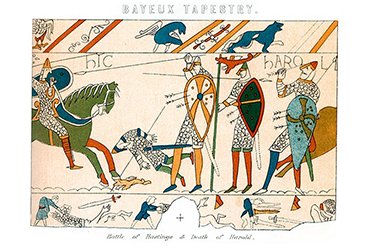
Sahil Matani points out, tongue firmly in cheek, that, as it is now proposed to compensate hereditary victims of Slavery, it can easily be argued that the same principle ought to be applied even more broadly, going back in History even farther, and farther, and farther.
One glaring example is the great evil visited on the Anglo-Saxon population by the Normal Conquest of 1066. By any standard, the effect on indigenous English society was enduring devastation. Through war, invasion and genocide, the Anglo-Saxon ruling class was almost entirely replaced, control of the church and state surrendered to foreign adversaries, English replaced by Norman French as the language of government, and England’s entire political, social and cultural orientation shifted from Northern Europe to the continent for the next thousand years.
This matters because, just as the pain of colonialism continues to be endured by its descendants, the Conquest continues to have lasting effects. In his study of surnames and social mobility, economic historian Gregory Clark concluded that Norman surnames continue to be 25 per cent overrepresented at Oxbridge to this day relative to other indigenous English surnames. As Clark put it: ‘The fact that Norman surnames had not been completely average in their social distribution by 1300, by 1600, or even by 1900 implies astonishingly slow rates of social mobility during every epoch of English history.’ Not for nothing did Nonconformists and Whigs loudly oppose ‘the Norman yoke’ during the 17th and 18th centuries.
Cambridge University, which still drips with Norman money and influence, should now consider to what extent it needs to compensate its Anglo-Saxon victims. The Sutton Trust estimates that Oxbridge graduates earn £400,000 more during their lifetimes than graduates from other UK universities. These figures imply that descendants of the rapacious Norman invader class could be earning tens of thousands of pounds more than other graduates — an undeserved lifetime premium that has survived 31 generations. So, reparations must certainly be made. But who shall pay, and who shall receive?
It should be straightforward for a Royal Commission to trace the present-day descendants of Britain’s Norman usurpers through a combination of genealogical and administrative research as well as — inevitably — mandatory genetic testing. A small tax on the Lampards, Vardys and Gascoignes of the world, payable to the Bamfords, Bransons and Ecclestones, would be sufficient to catalyse healing for the open sores of the past.
What are the sums involved? By 1086, the Norman arrivistes had stolen almost a third of the 12.5 million acres of arable land in England, parcelling it into manorial estates. At a conservative estimate, that land is now worth £7,000 per acre — or £25 billion in total that the Normans owe Anglo-Saxons for the Conquest. France’s liability could, of course, be offset against our exit bill from the EU.
There will be inevitable quibbles, such as descendants of Normans claiming that they were not personally responsible. But this is feeble prattle. Countries typically honour treaties dating hundreds of years in the past, despite no one being alive who signed them. We pay debts accumulated by previous generations.
RTWT
22 Jul 2018

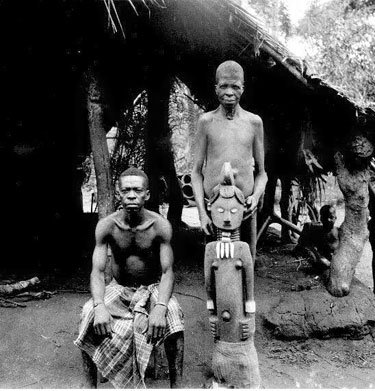
An Igbo with his slave.
Adaobi Tricia Nwaubani, in the New Yorker, has news for Ta-Nehisi Coates and all the other noisy SJWs denouncing European Civilization and America for the sin of Slavery: Slavery existed in Africa long before the European Reconnaissance and has continued right down to the present day, long after Slavery was abolished in America and everywhere else in the Western World. Africans, unlike Americans, are proud of the slave-owning ancestors and despise complaining slave descendants.
There is no Atlantic magazine in Nigeria, TNC!
Down the hill, near the river, in an area now overrun by bush, is the grave of my most celebrated ancestor: my great-grandfather Nwaubani Ogogo Oriaku. Nwaubani Ogogo was a slave trader who gained power and wealth by selling other Africans across the Atlantic. “He was a renowned trader,†my father told me proudly. “He dealt in palm produce and human beings.â€
Long before Europeans arrived, Igbos enslaved other Igbos as punishment for crimes, for the payment of debts, and as prisoners of war. The practice differed from slavery in the Americas: slaves were permitted to move freely in their communities and to own property, but they were also sometimes sacrificed in religious ceremonies or buried alive with their masters to serve them in the next life. When the transatlantic trade began, in the fifteenth century, the demand for slaves spiked. Igbo traders began kidnapping people from distant villages. Sometimes a family would sell off a disgraced relative, a practice that Ijoma Okoro, a professor of Igbo history at the University of Nigeria, Nsukka, likens to the shipping of British convicts to the penal colonies in Australia: “People would say, ‘Let them go. I don’t want to see them again.’ †Between the fifteenth and nineteenth centuries, nearly one and a half million Igbo slaves were sent across the Middle Passage.
My great-grandfather was given the nickname Nwaubani, which means “from the Bonny port region,†because he had the bright skin and healthy appearance associated at the time with people who lived near the coast and had access to rich foreign foods. (This became our family name.) In the late nineteenth century, he carried a slave-trading license from the Royal Niger Company, an English corporation that ruled southern Nigeria. His agents captured slaves across the region and passed them to middlemen, who brought them to the ports of Bonny and Calabar and sold them to white merchants. Slavery had already been abolished in the United States and the United Kingdom, but his slaves were legally shipped to Cuba and Brazil. To win his favor, local leaders gave him their daughters in marriage. (By his death, he had dozens of wives.) His influence drew the attention of colonial officials, who appointed him chief of Umujieze and several other towns. He presided over court cases and set up churches and schools. He built a guesthouse on the land where my parents’ home now stands, and hosted British dignitaries. To inform him of their impending arrival and verify their identities, guests sent him envelopes containing locks of their Caucasian hair.
Funeral rites for a distinguished Igbo man traditionally include the slaying of livestock—usually as many cows as his family can afford. Nwaubani Ogogo was so esteemed that, when he died, a leopard was killed, and six slaves were buried alive with him. My family inherited his canvas shoes, which he wore at a time when few Nigerians owned footwear, and the chains of his slaves, which were so heavy that, as a child, my father could hardly lift them. Throughout my upbringing, my relatives gleefully recounted Nwaubani Ogogo’s exploits. When I was about eight, my father took me to see the row of ugba trees where Nwaubani Ogogo kept his slaves chained up. In the nineteen-sixties, a family friend who taught history at a university in the U.K. saw Nwaubani Ogogo’s name mentioned in a textbook about the slave trade. Even my cousins who lived abroad learned that we had made it into the history books. …
Are you not ashamed of what he did?†I asked.
“I can never be ashamed of him,†he said, irritated. “Why should I be? His business was legitimate at the time. He was respected by everyone around.†My father is a lawyer and a human-rights activist who has spent much of his life challenging government abuses in southeast Nigeria. He sometimes had to flee our home to avoid being arrested. But his pride in his family was unwavering. “Not everyone could summon the courage to be a slave trader,†he said. “You had to have some boldness in you.†…
The British tried to end slavery among the Igbo in the early nineteen-hundreds, though the practice persisted into the nineteen-forties. In the early years of abolition, by British recommendation, masters adopted their freed slaves into their extended families. One of the slaves who joined my family was Nwaokonkwo, a convicted murderer from another village who chose slavery as an alternative to capital punishment and eventually became Nwaubani Ogogo’s most trusted manservant. In the nineteen-forties, after my great-grandfather was long dead, Nwaokonkwo was accused of attempting to poison his heir, Igbokwe, in order to steal a plot of land. My family sentenced him to banishment from the village. When he heard the verdict, he ran down the hill, flung himself on Nwaubani Ogogo’s grave, and wept, saying that my family had once given him refuge and was now casting him out. Eventually, my ancestors allowed him to remain, but instructed all their freed slaves to drop our surname and choose new names. “If they had been behaving better, they would have been accepted,†my father said.
he descendants of freed slaves in southern Nigeria, called ohu, still face significant stigma. Igbo culture forbids them from marrying freeborn people, and denies them traditional leadership titles such as Eze and Ozo. (The osu, an untouchable caste descended from slaves who served at shrines, face even more severe persecution.) My father considers the ohu in our family a thorn in our side, constantly in opposition to our decisions. In the nineteen-eighties, during a land dispute with another family, two ohu families testified against us in court. “They hate us,†my father said. “No matter how much money they have, they still have a slave mentality.
RTWT
19 Apr 2018


Hannes Wessels is angry that his teenage daughters are being indoctrinated with the Left’s Victimology approach to History. So angry that he produced a rant full of denied, ignored, and absolutely unspeakable truths.
That “truth†goes right to the core of busting the myth about colonialism being a blight on the continent [of Africa] and the independence that followed being a blessing, when in fact, the very converse is true. That would be made embarrassingly obvious if the countries of Europe and North America were to make it known that they were back in the slave trade and boats were on their way to the ports. The response from the forsaken millions, destined for lives of endless poverty, would doubtless be overwhelming, and the rush for the ships would be unstoppable. If the demand were to be there, I have little doubt Africa would soon be bereft of people. The vast majority would choose to abandon their purported “freedom†on a continent fast reversing back into anarchy and savagery and become “unfree†again under European suzerainty.
Hobbes in Leviathan painted a grim picture when he suggested that the natural state of mankind is a “war of all against all†in which men’s lives are “solitary, poor, nasty, brutish, and short.†Unfortunately, in most cases, especially in Africa, he’s been proved right. But if there is a chance to escape this dystopia, it rests with that part of the world where Europeans built societies on a foundation forged out of the Christian ethos. But of course, nobody is supposed to know that, either.
RTWT
08 Apr 2018


Florida Rep. Kimberly Daniels
Kimberly Daniels is a former prostitute who got religion, became a minister, and wound up elected to the Florida State House of Representatives from Jacksonville as a democrat.
She recently sponsored a bill which would require Florida public schools to post “In God We Trust” on their premises, which has outraged the militant secularist crowd.
Progressive Secular Humanist Michael Stone had a cow on the Patheos blog over a recent comment by Daniels thanking God for American Antebellum Slavery, because “if it wasn’t for slavery, I might be somewhere in Africa worshipping a tree.â€
Personally, I found her comment refreshingly un-PC and a lot more intelligent than the standard bitching and moaning about 150-years-dead historical circumstances and events.
Rep. Daniels’ quip is obviously not precisely accurate, absent slavery, today’s individual African Americans simply would never would have been born. But if, like Rep. Daniels, they indulge in imagining themselves born with the same identical personhood in their ancestral African place of genetic origin, they obviously would find themselves living in extreme poverty and primitive circumstances, with a much shorter life expectancy, possibly exposed to the hazards of tribal or religious violence or even to a slave trade still operating in the 21st Century, and worshiping trees or worse.
Michael Stone barks: “The stupid, it burns.” Well, he ought to know, because he, not Rep. Daniels, is the stupid one.
The African American community would be a lot better off with more leaders and spokesmen like Kimberly Daniels than they are with Al Sharpton and Ta-Nehisi Coates.
16 Mar 2017


J.T. Zealy, Renty, A Congolese slave on plantation of B.F. Taylor, Columbia, S.C., Daguerrotype photograph taken for Louis Agassiz’s study on Polygenism, March 1850.
Harvard Magazine reports that Harvard recently invited professional race-baiter Ta-Nehisi Coates to deliver the keynote address at a day-long liberal guiltfest over the century-and-a-half extinct institution which (regrettably) brought Coates’ ancestors to American shores.
The above 19th century daguerrotype served as poster-image for the conference because the wicked and nefarious naturalist Louis Agassiz, while working at Harvard, had caused that image to be captured for use in his studies of taxonomy and human etiology. That racist bastard Agassiz working in the first half of the 19th century (Can you imagine?) actually took the differences in skin color and physiognomy exhibited in this image as evidence supporting a significant taxonomic distinction between Sub-Saharan Africans and Europeans.
The audience of Harvards trembled guiltily on their seats as Ta-Nehisi Coates demanded reparations, telling his open-mouthed listeners that “We talk about enslavement as if it were a bump in the road. And I tell people: it’s the road. It’s the actual road.â€
Daniel Coquillette, Harvard Law School’s Warren visiting professor of American legal history, and the author of the 2015 book, On the Battlefield of Merit: Harvard Law School, the First Century, gave an account of Isaac Royall, whose bequest led to the 1817 founding of the law school and whose newly revealed slave legacy roiled the campus last year with intense protest and controversy. A West Indian planter and strikingly cruel man, Royall owned a sugar plantation on the island of Antigua during the eighteenth century. Sending gasps through the audience, Coquillette described how Royall brutally suppressed a major slave revolt there in 1736. More than 350 slaves had mobilized, but “at the last moment,†Coquillette said, they were betrayed. After it was over, 77 slaves were burned at the stake, and six others were drawn and quartered. The leader of the uprising, a slave named “King†Court, was gibbeted alive.
Following student-led protests, organized under the name Royall Must Fall, the law school decided last spring to change its shield, which was based on the Royall family crest. At the same time, professor Janet Halley, who is the school’s Royall professor—one of the country’s oldest named chairs—began taking first-year law students on tours of the slave quarters at Royall’s home in Medford, as a way of engaging the University’s heritage.
Read the whole thing.
06 Feb 2015


Jerry Toner, Director of Classical Studies at Churchill College, University of Cambridge and the author of The Roman Guide to Slave Management: A Treatise by Nobleman Marcus Sidonius Falx, argues that modern managers can draw lessons from the methods used by Ancient Roman masters to get the best service from their slaves.
Owning slaves and employing staff are in a simple sense a million miles apart. A comparison of the two is going to provoke, but similarities do exist. It is an uncomfortable truth that both slave owners and corporations want to extract the maximum possible value from their human assets, without exhausting them or provoking rebellion or escape. At a deep level, managing others always involves finding solutions to the age-old problems of assessing people from limited information, then incentivising, disciplining and rewarding them, to finally being rid of them. However much we might prefer to disguise the harsher side of wage-slavery behind a rhetoric of friendly teamwork, we could benefit from some straightforward Roman honesty. Everyone knew where they [sic] stood then – even if, sometimes, that was in the line for crucifixion.
Read the whole thing.
10 Sep 2013


According to Spiegel, her customers unaccountably became dissatisfied. (Clearly, she needed to whip them harder.)
Several sadomasochists eagerly responded to an advert posted by an Austrian woman farmer seeking clients. But they didn’t get the punishment they had hoped for. Instead, they found themselves doing farm labor in fetish gear, while paying for the privilege.
To sadomasochists keen on fresh air and the country life, it must have seemed like a dream come true. A 35-year-old woman advertizing herself as a dominatrix promised strict discipline to paying clients on her farm in the northeast of Austria.
Some 15 men responded to the advert posted in the Internet, and two or three took up the offer. “They didn’t get what they bargained for,” a spokesman for the Lower Austria police told SPIEGEL ONLINE, confirming reports in the Austrian media in recent days.
Instead of savoring the sweet pleasure of pain, the men found themselves consigned to farm labor such as chopping wood in the nude and mowing the lawn while wearing black fetish masks on the farm near the town of St Pölten. In effect, they were paying for the privilege of doing farm work.
“They had these clothes one wears in such circles, leather and plastic clothes and masks,” said the spokesman.
It is unclear how much they paid their mistress. After a week, they realized they had been duped and downed tools.
08 Nov 2012


A line of blue counties stretches across the usually red-voting South which parallels curiously enough an ancient sea coast from 100 million years ago. Why?
Dr. M. explains:
Hale County in west central Alabama and Bamberg County in southern South Carolina are 450 miles apart. Both counties have a population of 16,000 of which around 60% are African American. The median households and per capita incomes are well below their respective state’s median, in Hale nearly $10,000 less. Both were named after confederate officers–Stephen Fowler Hale and Francis Marion Bamberg. And although Hale’s county seat is the self-proclaimed Catfish Capitol, pulling catfish out of the Edisto River in Bamberg County is a favorite past time. These two counties share another unique feature. Amidst a blanket of Republican red both Hale and Bamberg voted primarily Democratic in the 2000, 2004, and again in the 2008 presidential elections. Indeed, Hale and Bamberg belong to a belt of counties cutting through the deep south–Mississippi, Alabama, Georgia, South Carolina, and North Carolina–that have voted over 50% Democratic in recent presidential elections. Why? A 100 million year old coastline.
During the Cretaceous, 139-65 million years ago, shallow seas covered much of the southern United States. These tropical waters were productive–giving rise to tiny marine plankton with carbonate skeletons which overtime accumulated into massive chalk formations. The chalk, both alkaline and porous, lead to fertile and well-drained soils in a band, mirroring that ancient coastline and stretching across the now much drier South. This arc of rich and dark soils in Alabama has long been known as the Black Belt. But many, including Booker T. Washington, coopted the term to refer to the entire Southern band. Washington wrote in his 1901 autobiography, Up from Slavery, “The term was first used to designate a part of the country which was distinguished by the color of the soil. The part of the country possessing this thick, dark, and naturally rich soil…â€
Cretaceous rock units (139-65 million years old) are shown in shades of green. Older rock units are in gray, younger ones in yellow. From Geology and Election 2000.
Over time this rich soil produced an amazingly productive agricultural region, especially for cotton. In 1859 alone a harvest of over 4,000 cotton bales was not uncommon within the belt. And yet, just tens of miles north or south this harvest was rare. Of course this level of cotton production required extensive labor.
As Washington notes further in his autobiography, “The part of the country possessing this thick, dark, and naturally rich soil was, of course, the part of the South where the slaves were most profitable, and consequently they were taken there in the largest numbers. Later and especially since the war, the term seems to be used wholly in a political sense—that is, to designate the counties where the black people outnumber the white.â€
Readers can compare 2012 results using individual state maps at Politico.
/div>

Feeds
|














